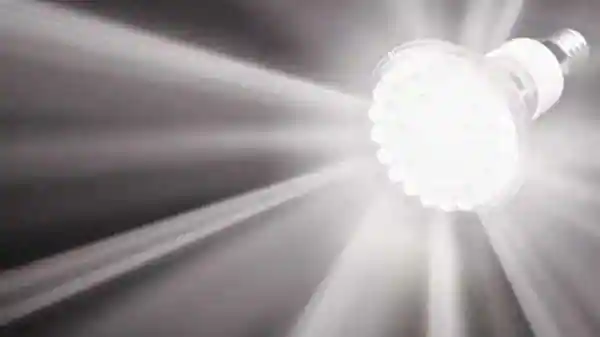
[ad_1]
When LED lightbulbs supplanted old-fashioned Edisons, it was with a promise of greater energy efficiency and remarkable longevity.
According to the U.S. Department of Energy, LEDs use at least 75% less power than incandescent bulbs and last up to 25 times longer.
But it’s not clear how long the modern lights last outside of ideal laboratory conditions, and in certain circumstances, they might not outlive the traditional bulbs they bumped off the shelf.
“A lot of expectations have been created that if you buy an LED lightbulb, you don’t have to change it ever,” said Nadarajah Narendran, director of research at Rensselaer Polytechnic Institute’s Lighting Research Center. “It’s time for us to reset those expectations.”
When an incandescent bulb burns out, it extinguishes with a pop as its glowing filament snaps.
Light-emitting diodes—the components that provide illumination in LED bulbs—are different. Instead of experiencing sudden death, they grow dimmer over time, and according to industry standards, their useful life is over when their brightness is diminished by 30%.
There’s no convenient way to measure this at home. If a bulb no longer seems sufficiently bright, it might be time to replace it.
To help consumers know what to expect, the Federal Trade Commission requires manufacturers to print how long LED bulbs are expected to last on the product package. Generally, the period is expressed in hours or years and assumes the bulbs will provide three hours of illumination daily.
The longevity is established by testing individual LED packages in a laboratory. Each package contains an LED chip and resembles a Christmas light. According to Dr. Narendran, in keeping with standards established by the Illuminating Engineering Society, the ambient temperature in the lab is 75 degrees Fahrenheit, and the LED packages operate continuously, without being switched on and off, for 6,000 hours.
The resulting lifetime rating is a statistical estimate of median operational life. If a bulb has a rated life of 10,000 hours, it means the laboratory analysis found that 50% of the tested products would last that long under operating conditions and failure criteria specified by the manufacturer.
A bulb certified by Energy Star, a program run by the Environmental Protection Agency and Department of Energy to promote energy efficiency, might have a rated life of 20,000 hours, or around 18 years based on three hours of use each day.
But in ordinary use, as many as a dozen LEDs might be connected in a series inside a lightbulb; one or more bulbs might be enclosed in a light fixture that inhibits air circulation; and the lights might be turned on and off multiple times a day—all conditions that can cause LEDs to grow dimmer more quickly than promised.
“How and where you use a bulb affects its life, and it’s always to the negative,” Dr. Narendran said. “It will reduce, not increase, the lifetime.”
Lumen degradation often traces back to the effects of heat and humidity or power-supply cycling, when the lights are switched off and on, Dr. Narendran said, but other components in the bulb can also fail, leading to a shorter life.
If testing procedures were revised to account for all of these conditions, it would alter the longevity estimates.
“You would find LED lifetime is not 20 years,” Dr. Narendran said. “It would be much shorter. It could be worse than an incandescent lamp in some cases. You could get only 500 hours if you have three bulbs trapped in a surface-mounted fixture” where airflow is restricted.
In comparison, incandescent bulbs are expected to last 1,000 hours.
In June, after reviewing reports published world-wide in journals, conference proceedings, white papers and government websites since 2011, Dr. Narendran and his colleagues, who have studied LED life since 1999, affirmed that LEDs have the potential for the longest useful life of all lighting technologies.
But, they said, instead of rating LED bulbs on the length of time it takes a single component—the light-emitting diodes—to degrade, the industry needs to define “LED system life” and develop a corresponding test to accurately estimate its length.
“Testing an individual LED is very different than when everything is tested together as a lightbulb,” Dr. Narendran said. “What the consumers should understand is that if you buy LED bulbs and put them in a table lamp where there is open ventilation, unlike a fixture where the bulb is trapped with a confined amount of air, the table lamp will get what the package is claiming, if you don’t switch it on and off too many times.”
The literature review was commissioned by the International Energy Agency, a group including 30 member countries that was created in 1974 to promote sustainable energy policies. The goal was to help regulators set meaningful LED lifetime requirements.
To that end, the researchers recommended evaluating lumen depreciation as well as catastrophic failures caused by broken electrical connections or other component failures.
System lifetime, they said, should be defined by the shorter span.
Never miss a story! Stay connected and informed with Mint.
Download
our App Now!!
[ad_2]